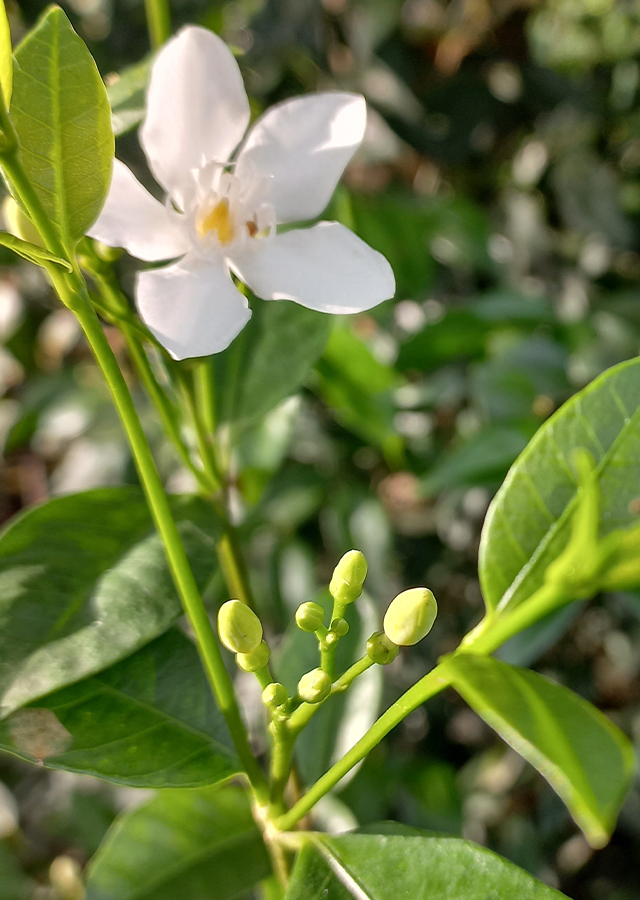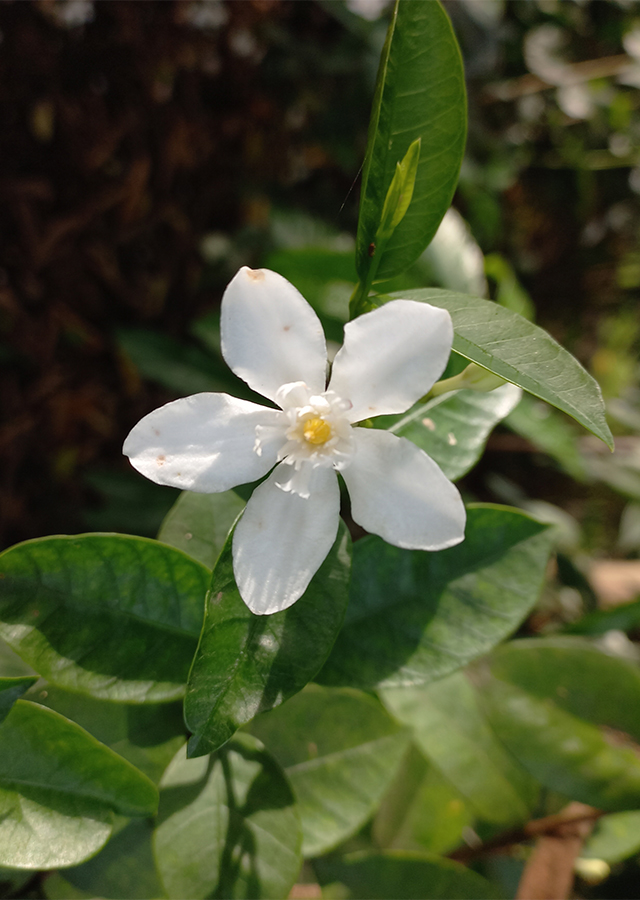Traditional Herbs from Wrightia antidysenterica
dysentery
- Take antidysentery jasmine bark and wash it until clean.
- Boil the bark in water until it boils.
- Strain the boiled product.
- Drink while it's warm.
overcome_skin_disorders": ["Take enough antidysentery jasmine leaves and wash them until clean.
What is Wrightia antidysenterica Looks like??



Parts of Wrightia antidysenterica that could be used
- Leaves
- Bark
- Roots
Wrightia antidysenterica Distribution
Antidysentery jasmine comes from Sri Lanka. Antidysentery jasmine is often used as an ornamental plant and is useful in treating intestinal motility disorders. This type of jasmine is a valuable medicinal plant in India. Juice from the bark is given for canker sores. The leaves are used to treat several skin disorders, such as psoriasis.Agroecology of Wrightia antidysenterica
Antidysentery jasmine grows at an altitude of 10 - 1,800 m above sea level at a temperature of 12 - 34 °C. This plant likes fertile, well-drained soil with an average annual rainfall of 1,200 - 2,500 mm, in full sun or partial shade. Plant care requires pruning the plant.
Morphology of Wrightia antidysenterica
- Taproot.
- Massive round stem, woody, branching close to the ground.
- Leaves are green, ovate to elliptical, opposite arrangement, measuring about 2.5 - 6 cm long and 1.5 - 2.5 cm, leaf veins pinnate, leaf edges flat.
- Flowers emerge from the tip of the stem, fragrant white, 5-petal flowers with a yellow center, measuring about 2.5 cm wide, very slender corolla tube and about 2 - 2.5 cm.
- Follicular fruit like a pod.
Cultivation of Wrightia antidysenterica
Plant propagation by seeds, stem cuttings and grafts.
Wrightia antidysenterica, more details :
Chemical Content of Wrightia antidysenterica2-aminobenzoyl O-β-D-apiofuranosyl-(1�'6)-β-D-glucopyranoside, two new megastigmane glycosides (wrightiaionosides A and B), four benzoxazinoid glycosides, one indole diglycoside, three simple aromatic glycosides, three megastigmane, five glycosides flavonoids, and one lignan.
Benefits of Wrightia antidysenterica
Having anti-inflammatory and antimicrobial activity, it is used in the treatment of dysentery, mouth ulcers, fever, diarrhea, worms, skin disorders, psoriasis, nonspecific dermatitis, astringent, and febrifuge.
Simplisia of Wrightia antidysenterica
Another Facts for Wrightia antidysenterica :
Synonym of Wrightia antidysentericaNerium antidysentericum L., Nerium divaricatum Lour., Nerium zeylanicum L.
Habitus of Wrightia antidysenterica
Bush. Annual shrub reaches 1.5 m in height
Habitat of Wrightia antidysenterica
- Roadside", "Bush Area", "Land
No comments:
Post a Comment